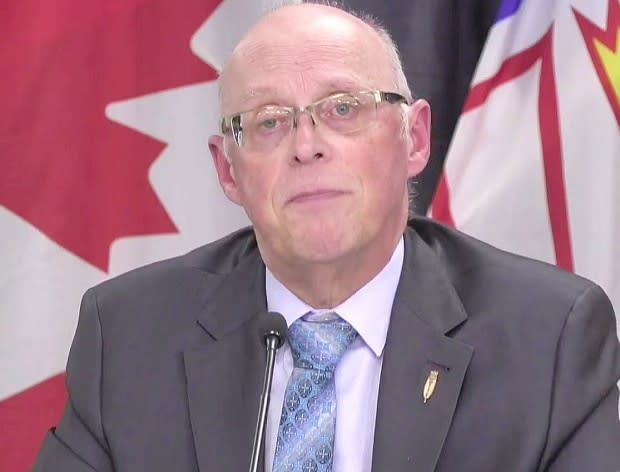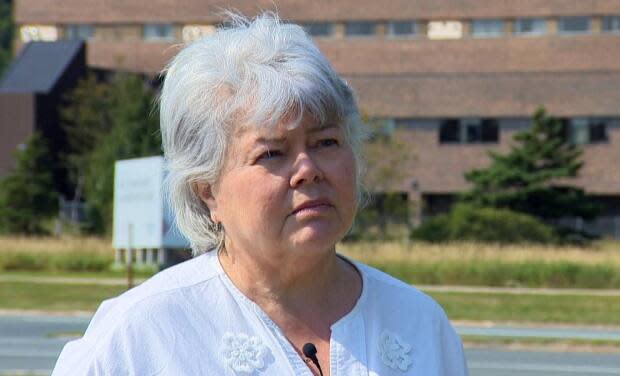The White House has more cases of COVID than all of N.L.; here's why
It's a tale of two COVIDs.
A person — or persons — showed up at the White House with the virus, and more than 30 people have since become sick, including the president and first lady.
In Labrador, a health-care worker showed up sick, went to stores and worked at the hospital, and no one else caught the disease.
Same disease, different outcomes.
The comparisons tells us a lot about why the novel coronavirus spreads, and doesn't.
A super-spreader event
On Sept. 26, the Rose Garden at the White House was the site of the official announcement of Amy Coney Barrett as President Donald Trump's pick for the Supreme Court of the United States.
Photos and videos at the event give clues to why the virus may have spread.
Very few of the people at the event wore masks. There was no physical distancing. Afterwards, people shook hands and hugged.

At least 11 people there — including Trump himself — have tested positive. In total, more than 30 people with connections to the White House have tested positive for COVID-19.
In Labrador, a different result
Compare that with the latest case in Labrador.
A health-care worker arrived from Saskatchewan. She was required to isolate, but after what the head of Labrador Grenfell-Health says was a miscommunication, she visited two local stores — at their peak time.
When the case was disclosed, people in Happy Valley-Goose Bay were worried. More than 650 people arranged to get tested.
Not a single other person has tested positive for COVID-19. No one at the stores, no one at the hospital where she worked in the days leading up to her diagnosis.

"There's no magic bullet or secret sauce to this," Health Minister John Haggie said Tuesday. "Our defence is defence in layers."
The first layer is 14 days of isolation for people who travel in from outside Atlantic Canada. But even when that doesn't happen, such as in Labrador, there are other defences.
Physical distancing, such as staying more than two metres apart, has been shown to help prevent spread of the virus. When that's not possible, wearing masks makes it harder for the virus to spread. They're required in public spaces, like the two stores the woman visited.
"Those are extremely important preventative measures," said Haggie.
The other key is getting the results of tests quickly. In Newfoundland and Labrador, that usually happens within 24 hours, and quickly identifying contacts, and making sure they isolate and get tested as well.
Haggie said right now within 48 hours of someone testing positive, they're able to identify more than 90 per cent of the close contacts and get them tested, which he says is some of the best in the country.
"There are some jurisdictions that can't even make 50 per cent currently," he said.
Fear of another Caul's cluster
Newfoundland and Labrador had one of the earliest and largest super-spreader events in the country. The cluster of cases that started at the Caul's funeral home in St. John's in March left more than 160 people sick with COVID.
The outbreak is long over, but the fear of another one still lingers.
Fish plants reopening, Mother's Day, fisheries protests, back to school — all of these things were predicted on social media and in casual conversation to be "the next Caul's."

Even Haggie warned about it going into the Easter weekend.
"Your next cabin party will be our next Caul's," he said April 7.
Those events didn't even result in a single case, let alone a cluster.
As it turns out, the fear of another outbreak may have prevented it.
The facts of the case — a phrase Haggie loves to use — are that in last four months the only new cases have been from travel or the immediate family members of people who've travelled. It hasn't spread in the community.
Behaviour has been key
One of the biggest differences between the White House and this province, has been how serious we've taken the risk.
"We have people behaving as if we are at risk," said Dr. Catherine Donovan, who used to teach clinical public health at Memorial University.
In March, when the St. John's cluster happened, people were still hugging, sharing food and shaking hands. Physical distancing was something that was brand new.
It's very different now, with our public health measures and our understanding of the virus.
"We may have a few cases, and hopefully that's what we keep it at but I think we're very well positioned to deal with that kind of a situation," Donovan said in a recent interview.
She says right now people are following the public health measures, and are keeping the contacts low.
Donovan's advice: take the virus seriously and follow the precautions, but do not otherwise fear another outbreak
"I don't think people should be worried about that if they are complying with the recommendations and the directions from the chief medical officer," she said.
Read more from CBC Newfoundland and Labrador


